13 Wild Animals in Austria [Wildlife in Austria]
Want to know more about wildlife in Austria?
Discover 13 wild animals in Austria in this post, as well as interesting facts about them. 🇦🇹
TABLE OF CONTENTS [show]
Learn All About Austrian Animals
Ready to learn all about Austrian animals?
I’ve always been fascinated by animals, and by how they can be so different from one country to another. In this guide, we’ll focus on the many animals Austria has on the land, in the sky, and under water.
I’ve split the guide into 7 categories:
- Native animals of Austria
- Endangered animals of Austria
- What is the Austrian national animal?
- How many animals native to Austria?
- Are there big cats in Austria?
- Are there predators in Austria?
- How many wolves are in Austria?
Let’s dive in right away with our first category!
Native Animals from Austria
Austria is a landlocked country that is located in the southern part of Central Europe. It is bordered by Germany, the Czech Republic, Slovakia, Hungary, Italy, Switzerland, and Liechtenstein, and its capital city is Vienna, which counts more than 1,911,000 inhabitants (but 2,600,000 if you include the metropolitan area).
An interesting part of the country that I wanted to tackle is its wildlife. In light of that, I have listed the best of it, and I hope you will love learning what animals live in Austria.
Here’s the Austria animals list.
1. Eurasian lynx
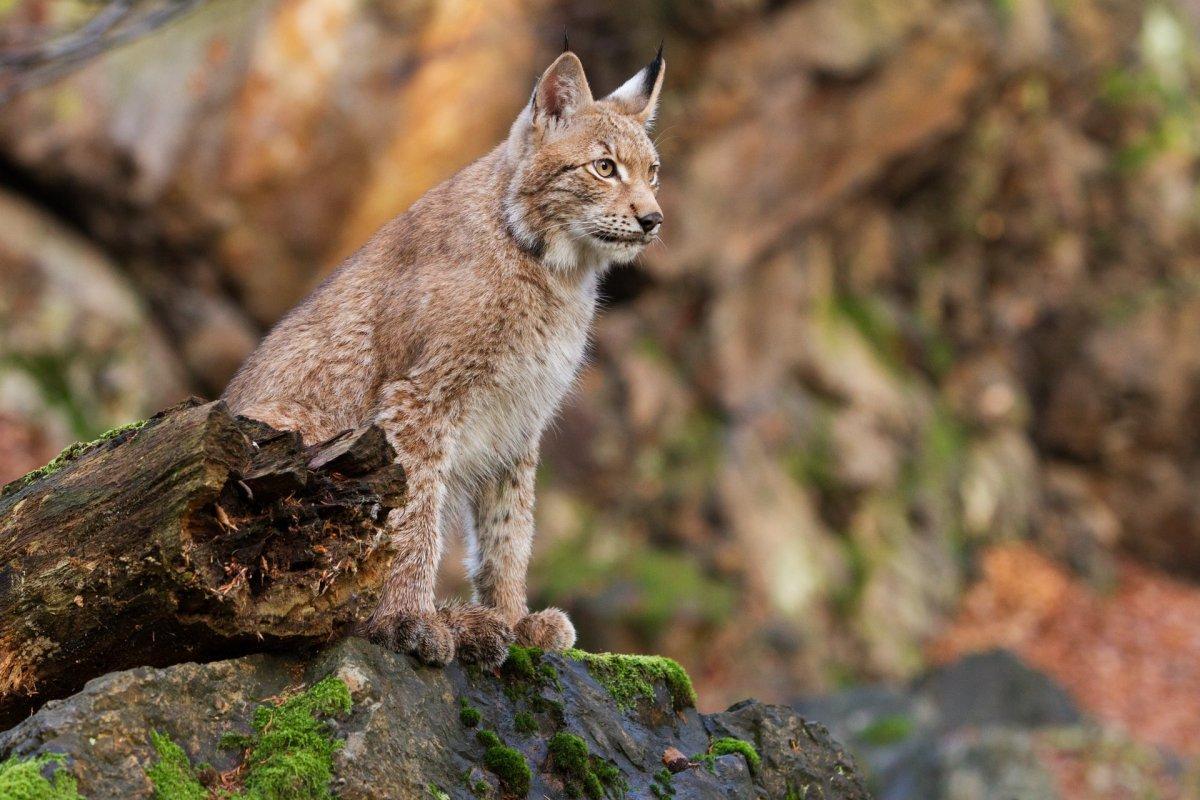
- Name: Eurasian lynx
- Scientific name: Lynx lynx
- Conservation status:
Do not be fooled by its beauty, the Eurasian lynx can be really dangerous. It can be potentially aggressive and is extremely strong, but it is so elusive that it would be really unfortunate to encounter one while on a hike. Also, there are very few Eurasian lynxes in Austria currently.
There has been a reintroduction effort of Eurasian lynxes in the Alps, and their population is growing. However, they have to face habitat degradation as well as a lack of prey.
2. Peregrine falcon
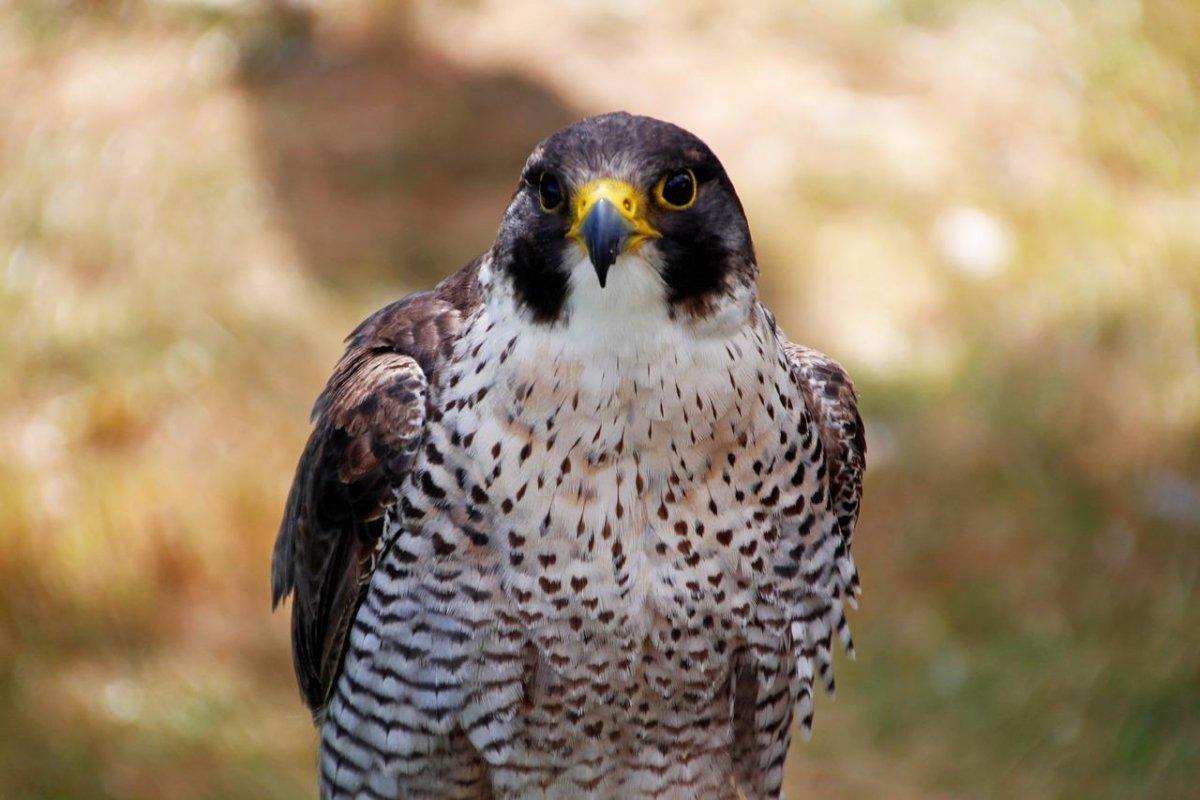
- Name: Peregrine falcon
- Scientific name: Falco peregrinus
- Conservation status:
The peregrine falcon can be found throughout most of the world, even though it depends on the season. It sometimes reaches polar regions (during summer), as well as the hotter regions around the equator (during winter), while residing in temperate climates around the rest of the year.
It is very famous for being the fastest animal on the planet, having reached 389 km/h / 242 mph while diving. It mostly feeds on medium-sized birds like doves and pigeons.
3. Red fox
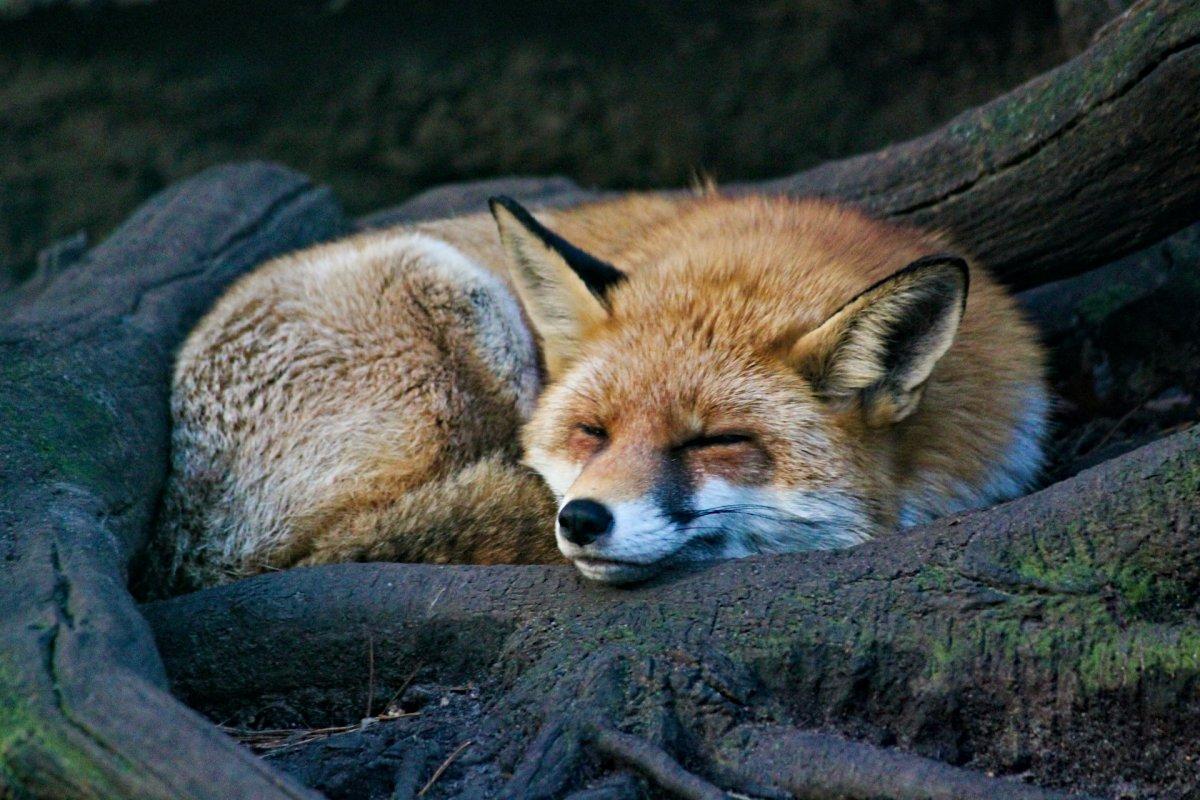
- Name: Red fox
- Scientific name: Vulpes vulpes
- Conservation status:
The red fox is the most widespread species of fox. It is also the largest of them and can be found throughout the major part of the northern hemisphere. It was even introduced to Australia, where it is considered really harmful, and earned its place in the ranking of the world’s 100 most invasive species.
Red foxes have a relatively wide territory, which they mark with their urine. They have an omnivore diet, in which they can eat anything, mostly voles, mice, but also reptiles and insects.
4. Mallard
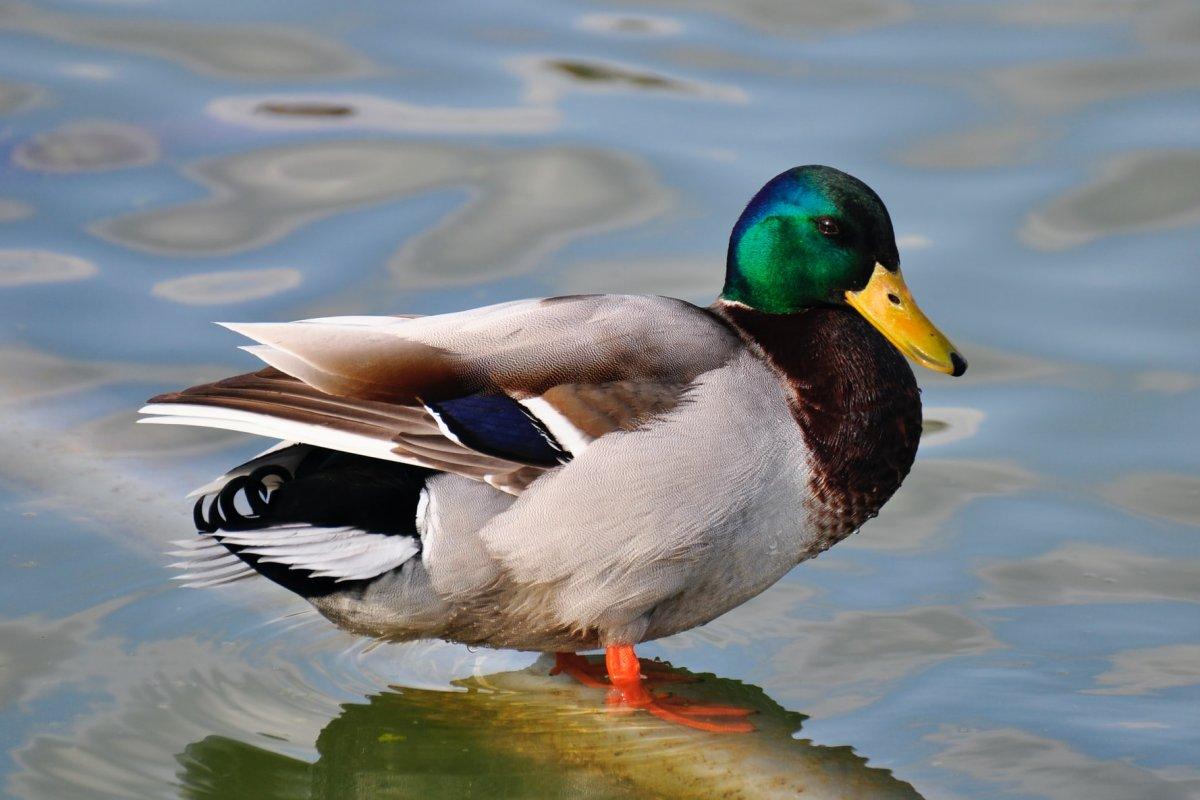
- Name: Mallard
- Scientific name: Anas platyrhynchos
- Conservation status:
The mallard, also known as the wild duck, is a duck that inhabits most of the northern hemisphere. It breeds in temperate and subtropical climates and is the main living ancestor of domestic ducks.
Male and female mallards are very easy to tell apart. Males have an unmistakable green plumage on their heads, while females have brown and gray feathers. Their diet is very flexible, even though it is mostly made of insects, worms, and crustaceans.
5. Common raven
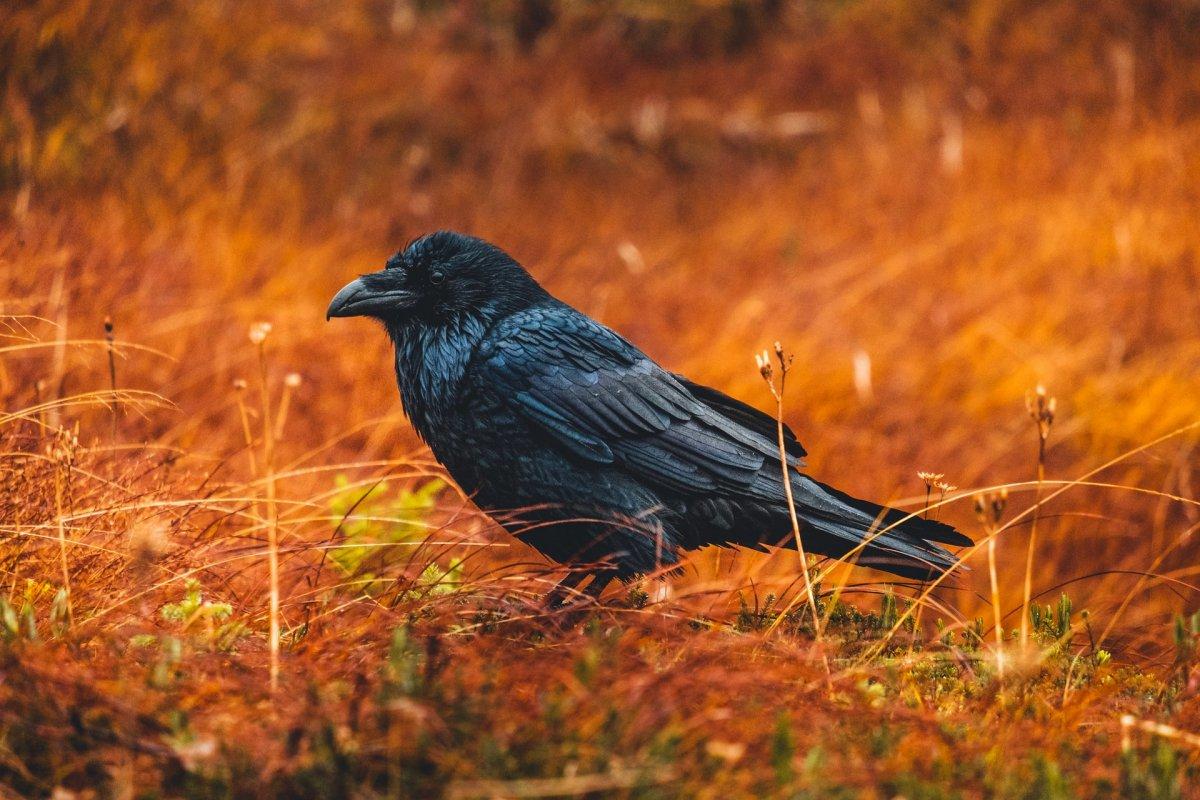
- Name: Common raven
- Scientific name: Corvus corax
- Conservation status:
Similar to the peregrine falcon and the mallard, the common raven is very common in the northern hemisphere. It is the most widely distributed species of corvids, and it has at least 8 subspecies.
Common ravens have coexisted with humans for thousands of years, and they can be a nuisance sometimes. They are opportunistic birds that will feed on whatever they can find: berries, fruits, small animals, food waste, and nesting birds.
6. Stoat
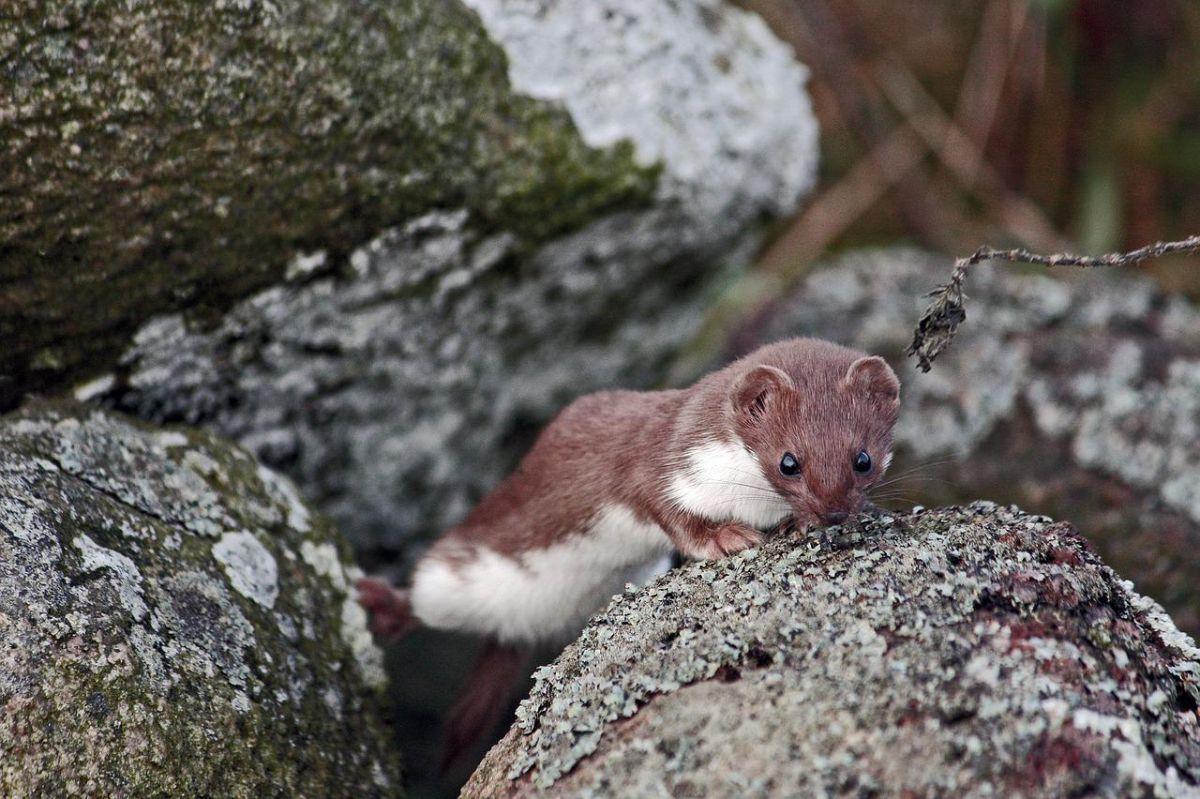
- Name: Stoat
- Scientific name: Mustela erminea
- Conservation status:
The stoat, also known as a short-tailed weasel or Eurasian ermine, is native to Eurasia and to northern North America. It was introduced into New Zealand at the end of the 19th century in order to control rabbits but wreaked havoc on native bird populations instead. It is also one of the world’s top 100 worst invaders.
Its fur has been used since the 15th century when Catholic monarchs fell in love with it. It is now used as a luxury material and is still sold in most countries.
7. Grass snake
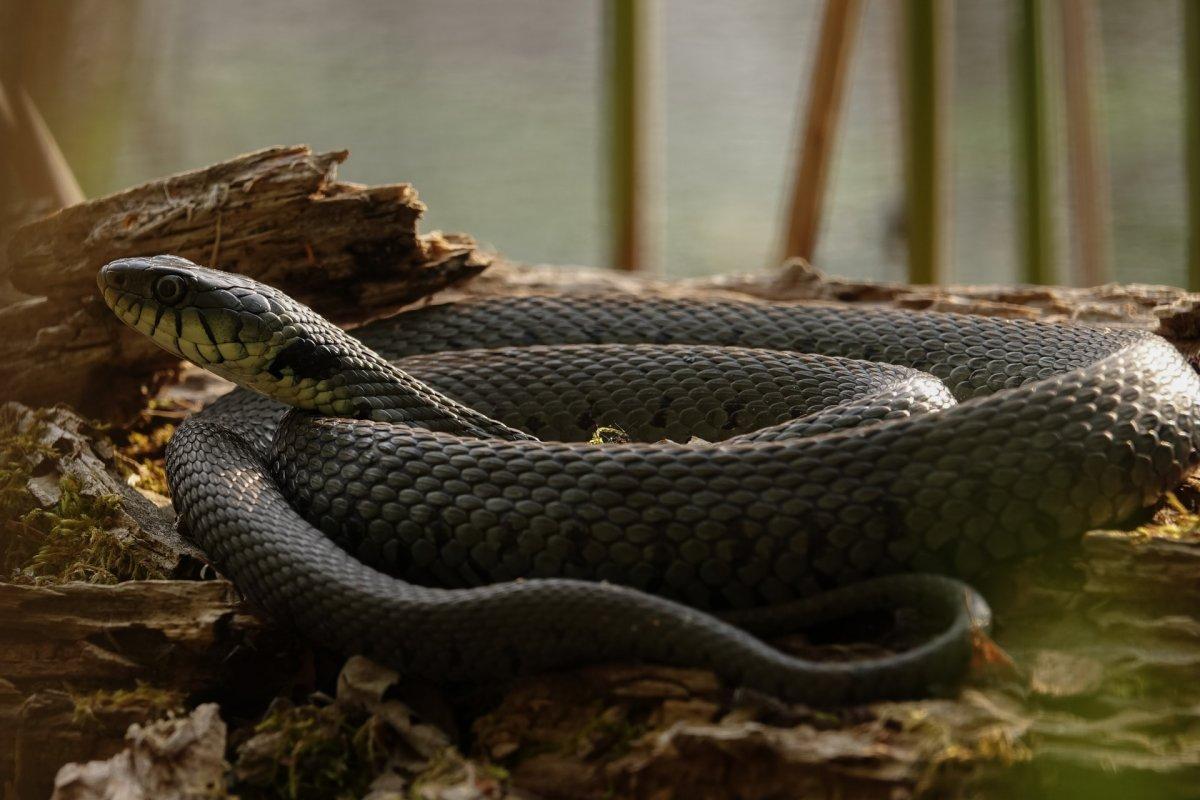
- Name: Grass snake
- Scientific name: Natrix natrix
- Conservation status:
The grass snake, also known as the ringed snake or the water snake, is a non-venomous snake native to Eurasia. It is called water snake because it can be found near water, and it almost only feeds on amphibians.
This snake is dark green or brown, with a yellow or white collar. It is widely distributed in Europe, being found anywhere from Scandinavia to South Italy. After breeding in summer, it is common for the grass snake to migrate, moving several hundred meters per day.
8. Eurasian eagle owl
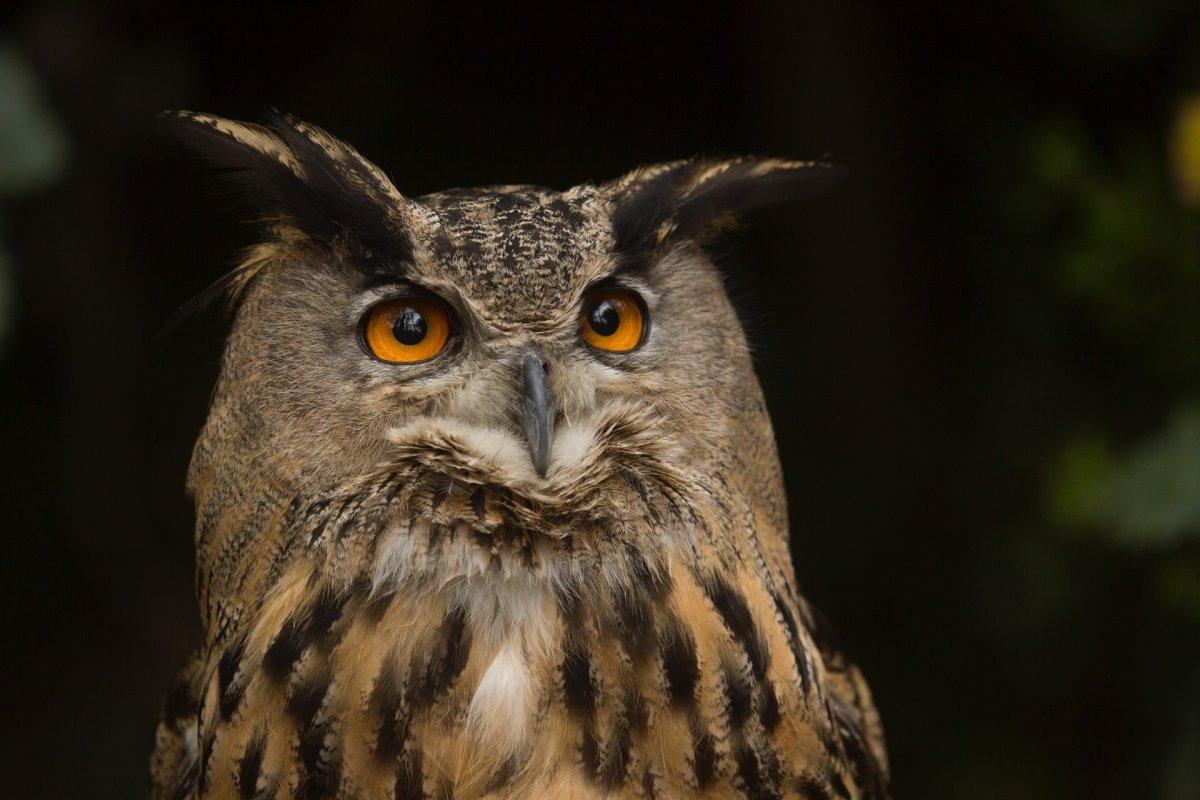
- Name: Eurasian eagle-owl
- Scientific name: Bubo bubo
- Conservation status:
The Eurasian eagle owl is native to Eurasia. It is largely known as the eagle-owl or the Uhu. It is a bird of mountainous and rocky regions that choose woodland to hunt its prey. It also inhabits coniferous forests and steppes. In any case, the Eurasian eagle-owl likes remote and elevated areas.
This eagle owl is the largest of all the species, on top of being the most widely distributed one. Even though they can be found in western China and Russia, the vast majority of them reside in Continental Europe, Central Asia, and Russia.
9. European pine marten
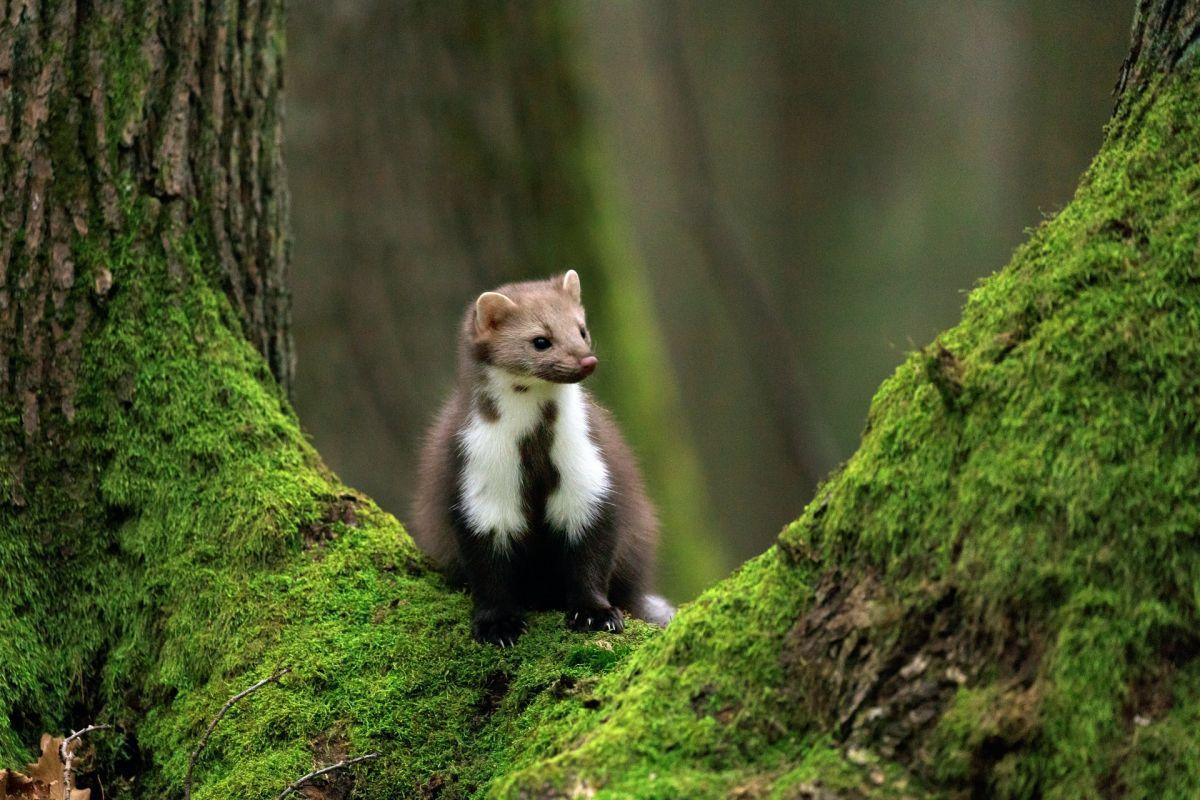
- Name: European pine marten
- Scientific name: Martes martes
- Conservation status:
The pine marten, or European pine marten, is a mustelid native to Northern Europe. Throughout the years, it has slowly spread to the South, and can now be found as far as the Middle East. Its fur is brown, and it is shorter during the summer while being silkier and longer during the winter.
The European pine marten dwells in well-wooded areas, where it can hunt for its prey. It is threatened by golden eagles, red foxes, and wildcats, but their biggest threat is humans (persecution and loss of habitat mostly).
10. Red squirrel
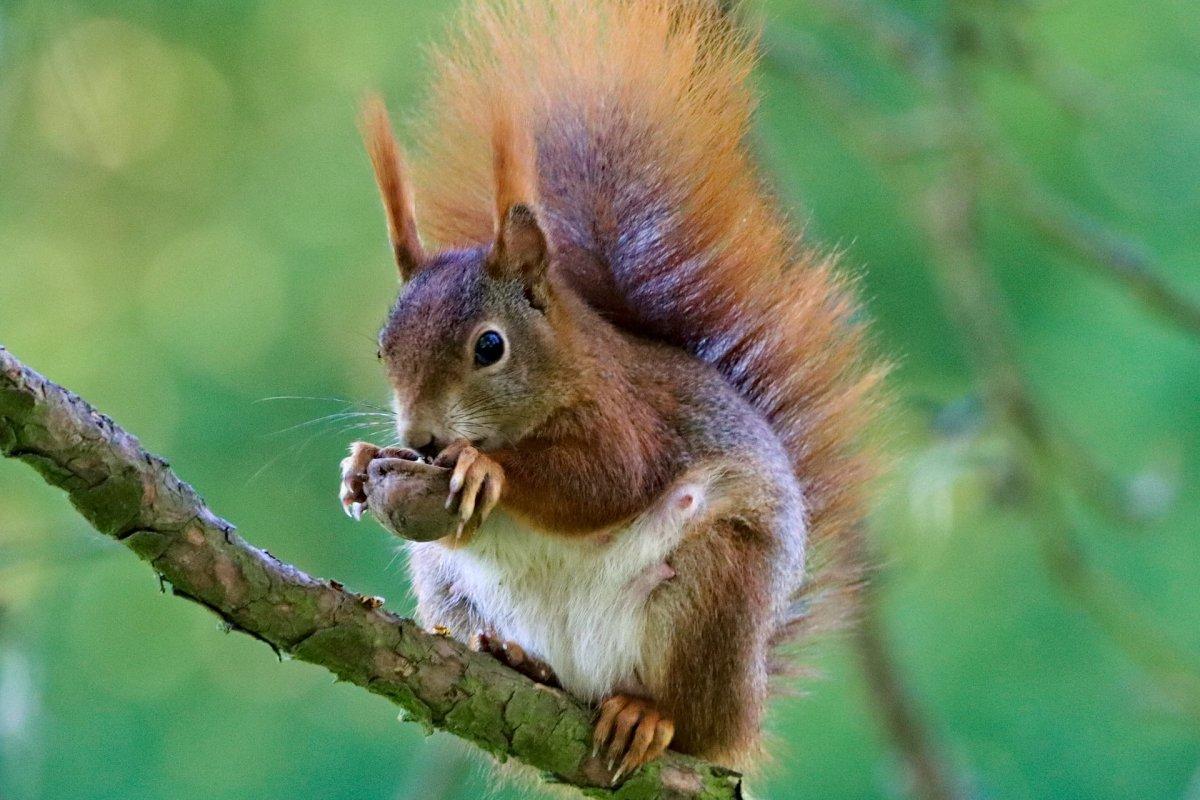
- Name: Red squirrel
- Scientific name: Sciurus vulgaris
- Conservation status:
The red squirrel is a common species of squirrel in all of Eurasia, including Austria. Its population has dramatically decreased in recent years in Great Britain, Italy, and Ireland. This is mostly due to the introduction of the eastern gray squirrel from North America. On the other hand, red squirrels are thriving in Scotland, thanks to conservation efforts.
Red squirrels inhabit boreal and coniferous woods, usually in pines. They feed on seeds, which dictates their life expectancy. The hardest part of their life is by far the first winter.
11. Alpine ibex
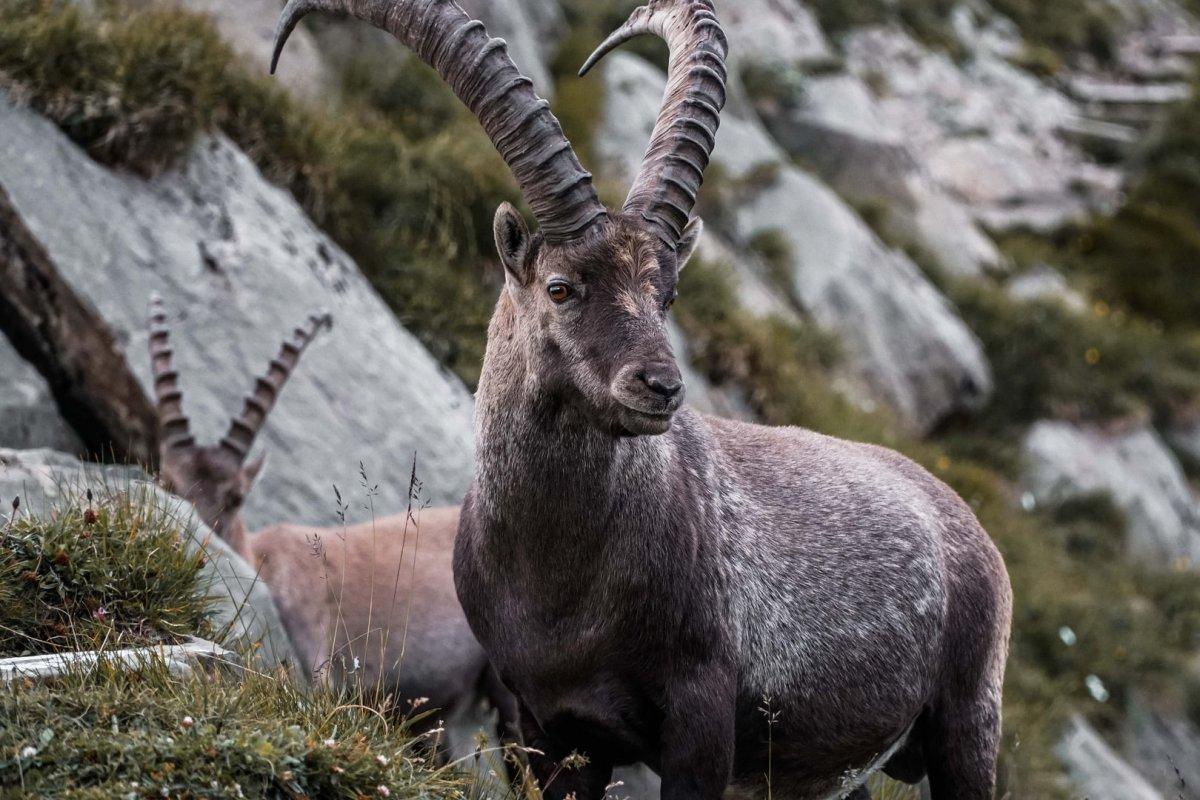
- Name: Alpine ibex
- Scientific name: Capra ibex
- Conservation status:
The Alpine ibex, locally known as ibex or bouquetin, is a species of wild goat, native to the Alps mountain range in Central Europe. Therefore, it can be found in Austria, France, Italy, Germany, and Switzerland.
This species of ibex is particularly famous for being an extreme climber: you may have already seen some pictures of them on the wall of a dam! They are herbivorous and eat grass, mosses, flowers, leaves, and twigs.
12. European hedgehog
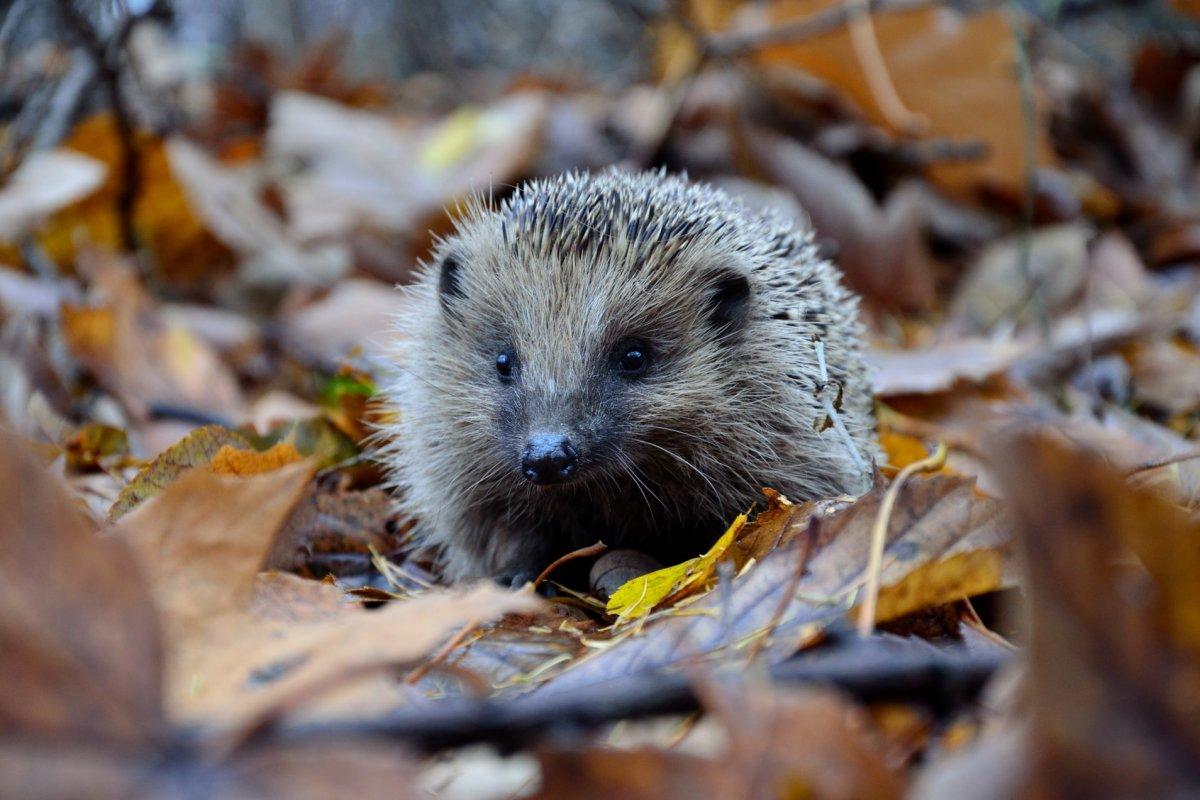
- Name: European hedgehog
- Scientific name: Erinaceus europaeus
- Conservation status:
The European hedgehog is a very common species of hedgehog native to all of Europe, from Spain to Scandinavia. It is a nocturnal animal that sadly is threatened by cars when it crosses the road. It is an omnivorous animal that feeds on insects, its favorite being bees, ants, and beetles.
This hedgehog can frequently reside in humans’ gardens and is largely tolerated. In some countries, like Denmark and Poland, it is even protected by law!
13. Eurasian beaver
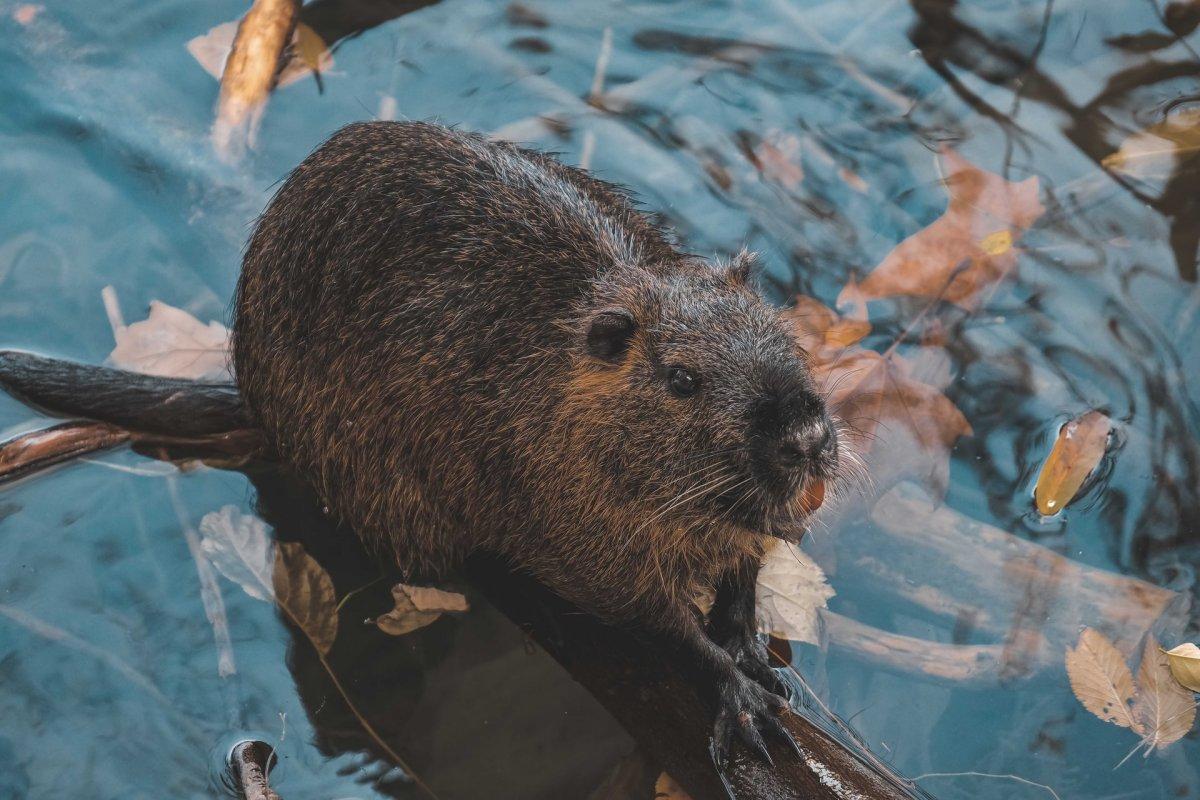
- Name: Eurasian beaver
- Scientific name: Castor fiber
- Conservation status:
Even though Austria is a landlocked country, which means it does not have access to any sea or ocean, there are still Eurasian beavers in its lakes and rivers. Sadly, the Eurasian beaver was much more widespread than it is currently, but it was hunted to near-extinction. There were only 1,200 beavers in the 20th century, but it has now been reintroduced and can be found in Central Europe, as well as Scandinavia, China, and Great Britain.
—
So there you have them, these were my 13 animals of the Austria wildlife. I hope you enjoyed this list and that you learned something new today.
In case you want to learn more about animals in the country, feel free to keep reading, as I still have lots of things to tell you about:
Endangered Animals of Austria
This is definitely the saddest part of the list, but it is very important to raise awareness. Because of this, let’s go through the list of endangered animals in Austria.
Here are the animals in danger of extinction in Austria.
- Salvelinus profundus
- Coregonus gutturosus
- Sociable lapwing
- Beluga
- Bavarian pine vole
- European mink
- Common hamster
- and 3 more…
- Rutilus meidingeri
- European souslik
- Egyptian vulture
- Saker falcon
- European rabbit
- and 2 more…
To see the full list of endangered species in Austria, head over to the International Union for Conservation of Nature’s Red List.
What is the Austrian National Animal?
The national animal of Austria is the black eagle.
Like many other countries, Austria chose the black eagle as its national animal. It is a symbol of pride, victory, and might, and it is present on the coat of arms of the country.
The black eagle is a bird of prey that lives in tropical Asia, interestingly enough. There are 10,000 to 100,000 black eagles, spread from northeastern Pakistan to Malaysia.
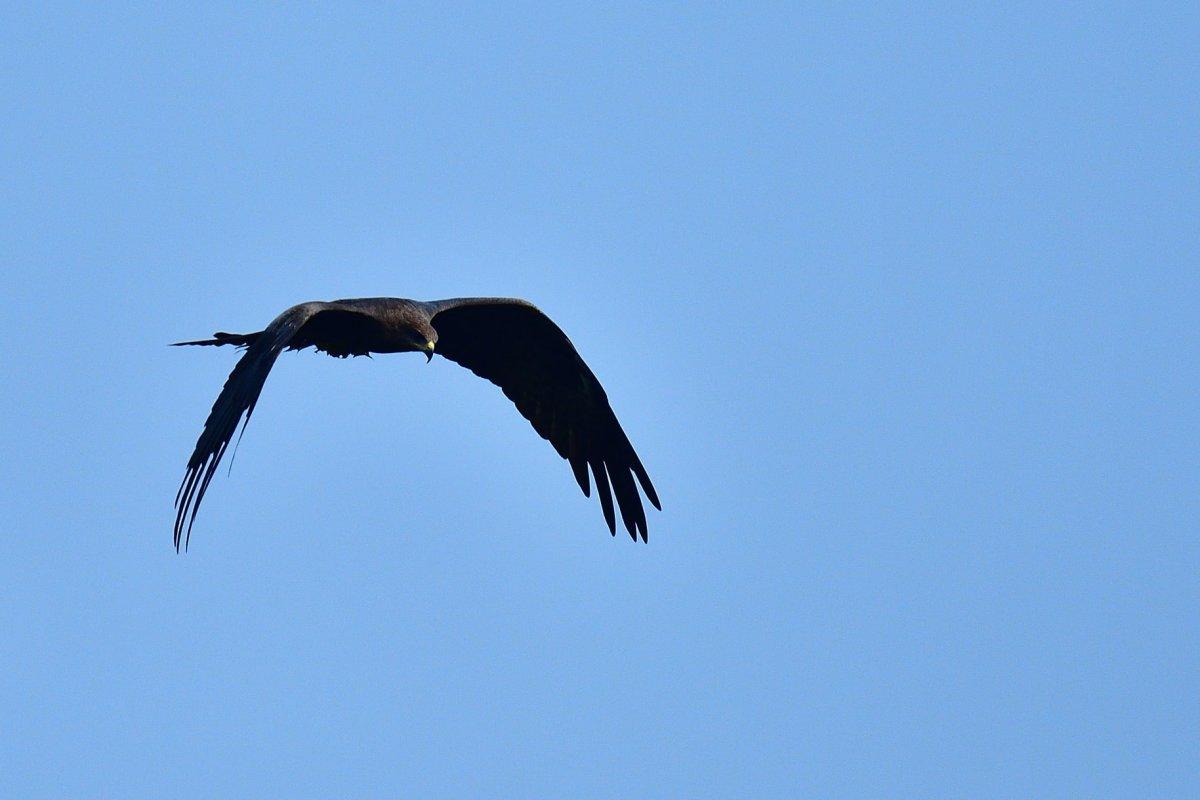
How Many Animals Native to Austria?
What is the diversity of native animals in Austria?
Let’s look at the total number of species of Chordata (mammals, birds, fishes, and reptiles).
Total number of animal species in Austria: 625 (3,142 in total in Europe)
Are there big cats in Austria?
There are wild cats and lynxes in Austria. The wildcat was widespread in the eastern part of Austria up until 1850. After that, it went gradually on the decline. Now, they are more elusive, even though they can still be found in the forests of the country.
As for lynxes, there are very few of them, and they hide at higher elevations.
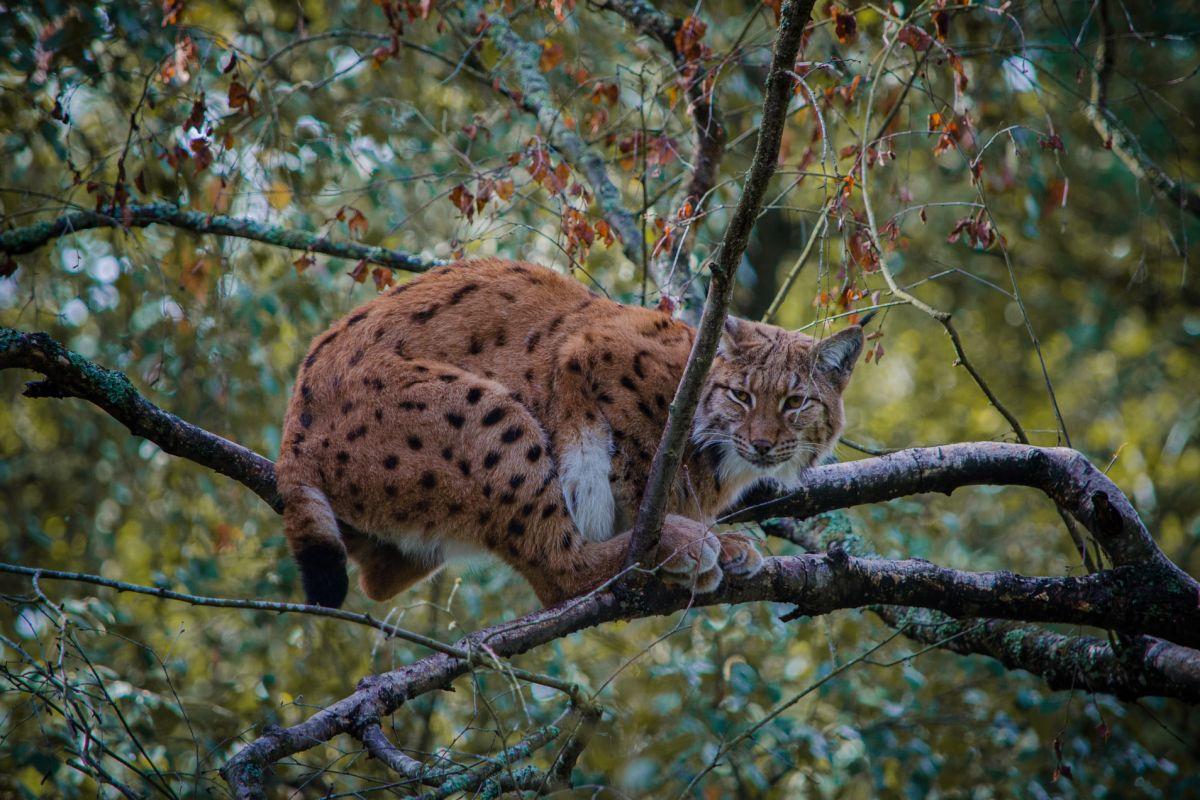
Are there predators in Austria?
Predators are everywhere. Dangerous predators for humans can also be found throughout the world, including in Austria. The most dangerous of them are the common European viper, the horned viper, and the Eurasian brown bear.
The common European viper inhabits most of Europe and is not very dangerous compared to other snakes. The horned viper is native to the southern part of Austria, and it is much more hazardous. Finally, the Eurasian brown bear rarely attacks humans but is still very impressive and possibly dangerous.
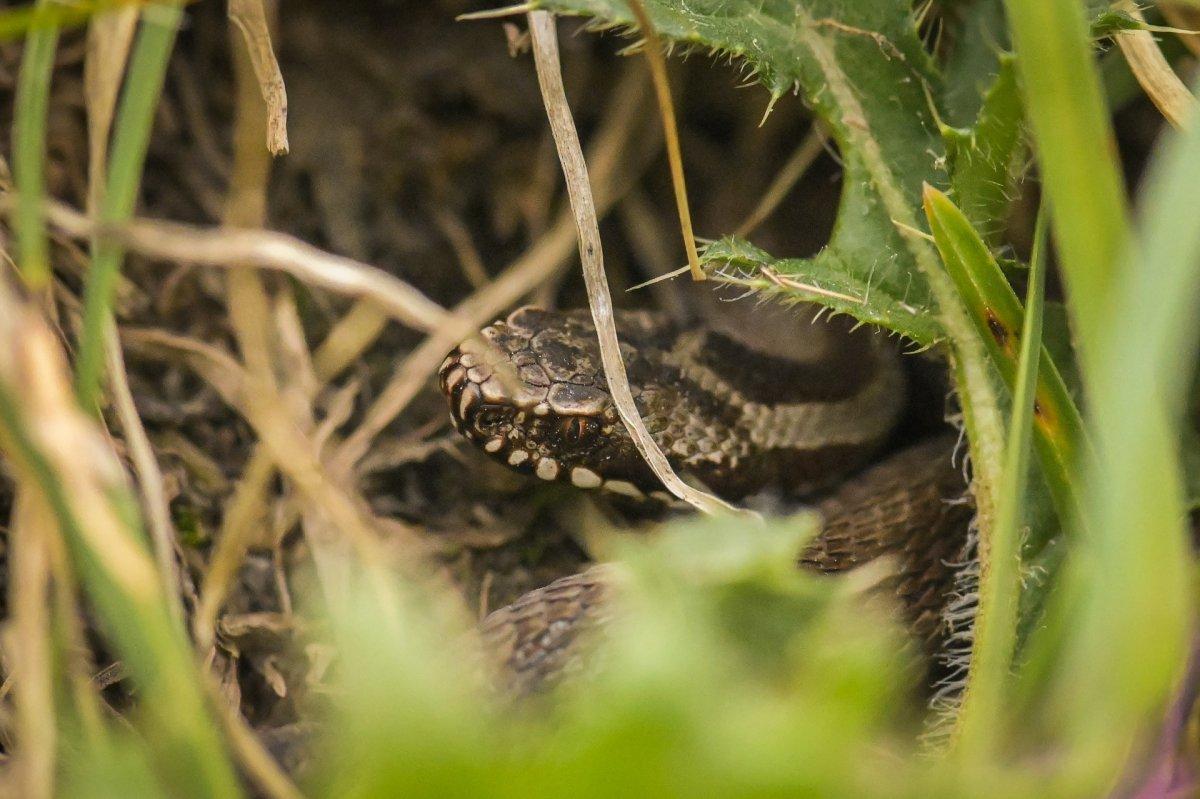
How many wolves are in Austria?
There are barely any wolves in Austria. In fact, they were extirpated by the end of the 19th century, but have been coming back in the very recent years.
As of 2020, an estimated 20 wolves live in Austria. They have to face persecution for attacking livestock and entering human-active areas, but hopefully, their population will grow more in the upcoming years.
More About Animals in the World!
Loved these Austrian wildlife facts? Want to see what animals live in other countries?
Then check out these posts:
Or click here to see ALL the facts up on the blog! Spoiler alert: there’s A LOT of them.
Share the knowledge! Click on the buttons below to share information about these famous animals in Austria with your friends, and help them learn more about the world 🙂

![21 Wild Animals in Switzerland [Wildlife in Switzerland]](https://www.kevmrc.com/wp-content/uploads/2022/11/21-wild-animals-in-switzerland.jpg)
![16 Wild Animals in Belize [Wildlife in Belize]](https://www.kevmrc.com/wp-content/uploads/2022/08/16-wild-animals-in-belize.jpg)
![19 Wild Animals in Israel [Wildlife in Israel]](https://www.kevmrc.com/wp-content/uploads/2022/06/19-wild-animals-in-israel.jpg)